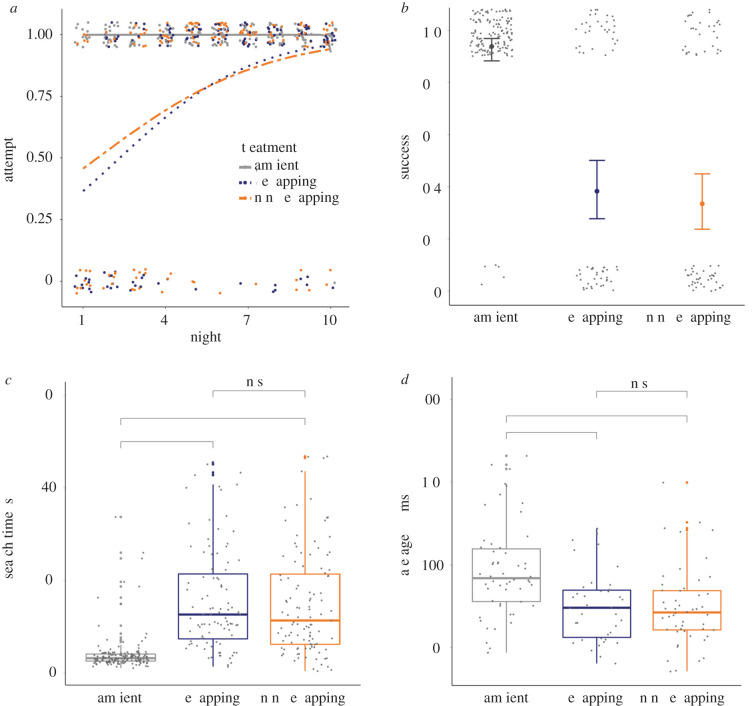Figure 2.
Bats demonstrate altered hunting behaviour in noise, regardless of whether noise overlaps the prey cue. In comparison with ambient noise conditions, bats hunting in noise treatments that either spectrally overlap or do not overlap (non-overlapping) a prey cue (a) show increased reticence initially to hunt in noise, but over time are more willing to make a foraging attempt, (b) are nearly half as successful, (c) take almost three times longer to make a foraging attempt, and (d) use more sonar pulses (i.e. decrease average IPI). Together, these results are indicative of a distracting effect of noise. Attempt: ambient n = 159, overlapping n = 136, non-overlapping n = 143. Success and search time: ambient n = 158, overlapping n = 101, non-overlapping n = 107, IPI ambient n = 54, overlapping n = 38, non-overlapping n = 50. Note that in (a–d), each data point represents an individual trial, (b) portrays the median and 95% CI, (c) and (d) boxes display the medians, 25th and 75th percentiles, and the whiskers indicate the 5th and 95th percentiles. (Online version in colour.)

